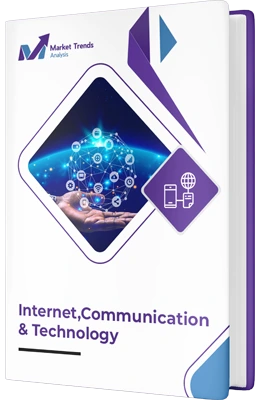
The 5G Femtocell Market size was valued at USD 1.2 Billion in 2024 and is projected to reach USD 5.8 Billion by 2033, growing at a Compound Annual Growth Rate (CAGR) of 22.5% from 2025 to 2033. This rapid expansion is driven by the increasing demand for enhanced indoor connectivity, the proliferation of smart devices, and the deployment of 5G infrastructure across various sectors. Market penetration strategies focusing on enterprise and residential segments are accelerating adoption, supported by advancements in small cell technology and regulatory support. As 5G networks become ubiquitous, the strategic importance of femtocells in ensuring seamless coverage and capacity optimization continues to rise, positioning the market for sustained growth over the next decade.
5G Femtocells are compact, low-power cellular base stations designed to extend high-speed 5G network coverage within confined spaces such as homes, offices, and public venues. They operate by connecting to the broader cellular network via broadband internet, effectively acting as localized cell towers. These devices facilitate improved indoor signal strength, increased network capacity, and reduced latency, thereby enhancing user experience. Leveraging advanced beamforming and massive MIMO technologies, 5G femtocells support the burgeoning demand for data-intensive applications and IoT connectivity. Their deployment is pivotal in bridging coverage gaps and optimizing network performance in dense urban environments.
The 5G femtocell market is characterized by rapid technological innovations and strategic deployments aligned with the evolving digital landscape. Industry-specific innovations such as integration with IoT ecosystems and smart city initiatives are shaping market trajectories. The increasing adoption of cloud-based management platforms enhances scalability and operational efficiency. Moreover, regulatory frameworks are evolving to facilitate small cell deployments, fostering faster market penetration. The rise of enterprise-centric solutions underscores a shift toward customized connectivity offerings. Lastly, partnerships between telecom operators and technology providers are accelerating innovation and deployment cycles, ensuring the market remains dynamic and forward-looking.
The expansion of the 5G femtocell market is primarily driven by the escalating demand for high-capacity indoor coverage and seamless connectivity. As consumer behavior shifts toward data-intensive applications, telecom providers are deploying femtocells to alleviate network congestion and improve quality of service. The proliferation of smart devices and IoT sensors necessitates localized network solutions capable of supporting massive device connectivity. Additionally, regulatory incentives and government initiatives aimed at densifying 5G infrastructure are catalyzing deployment. The need for reliable, low-latency communication in sectors such as healthcare, manufacturing, and retail further propels market growth. Strategic investments in network virtualization and edge computing also underpin the expanding adoption of femtocell technology.
Despite its promising outlook, the 5G femtocell market faces several challenges that could hinder growth trajectories. Deployment complexities related to site acquisition, regulatory compliance, and integration with existing infrastructure pose significant barriers. High initial capital expenditure and operational costs may deter smaller operators and enterprises from adopting femtocell solutions. Concerns regarding security vulnerabilities and data privacy also impact deployment decisions, especially in sensitive sectors. Additionally, interference issues and limited standardization across regions can complicate interoperability and scalability. The evolving landscape of spectrum allocation and licensing further adds to the regulatory uncertainties that may slow market expansion.
The evolving 5G ecosystem presents numerous opportunities for femtocell market players to innovate and expand. The rising demand for private 5G networks in industries such as manufacturing, logistics, and healthcare offers a lucrative avenue for deployment. The integration of femtocells with edge computing and AI-driven analytics can enable smarter, more autonomous network management. Growing investments in smart city infrastructure and public safety networks further open avenues for localized connectivity solutions. Additionally, the increasing focus on energy-efficient and environmentally sustainable devices aligns with global sustainability goals, creating new product development opportunities. Strategic collaborations with telecom operators and technology firms will accelerate deployment and market penetration, fostering a resilient growth trajectory.
The 5G femtocell market is poised to revolutionize connectivity paradigms across multiple domains. Future applications will encompass ultra-reliable low-latency communications (URLLC) for autonomous vehicles, augmented reality (AR), and virtual reality (VR) experiences in entertainment and enterprise settings. The proliferation of smart factories and Industry 4.0 initiatives will leverage femtocells for real-time data exchange, predictive maintenance, and automation. As 5G networks become more pervasive, femtocells will serve as critical enablers for smart homes, connected healthcare, and immersive digital environments. The integration of femtocells with 6G and beyond will further unlock unprecedented levels of connectivity, fostering a hyper-connected, intelligent digital ecosystem.
The 5G Femtocell Market size was valued at USD 1.2 Billion in 2024 and is projected to reach USD 5.8 Billion by 2033, growing at a Compound Annual Growth Rate (CAGR) of 22.5% from 2025 to 2033.
The Top players operating in the 5G Femtocell Market Key players in the 5G Femtocell Market include Ericsson, Nokia, Huawei, ZTE, Samsung, Qualcomm, Cisco Systems, NEC Corporation, Fujitsu, and Airspan Networks, driving innovation and network densification globally.
5G Femtocell Market is segmented based on Deployment Type, Frequency Band, End-User Industry And Geography.
The 5G Femtocell Market is driven by rising mobile data traffic, demand for enhanced indoor coverage, low-latency connectivity, IoT expansion, and increasing adoption of smart devices across residential and enterprise environments.
The sample report for the 5G Femtocell Market can be obtained on demand from the website. Also, the 24*7 chat support & direct call services are provided to procure the sample report.